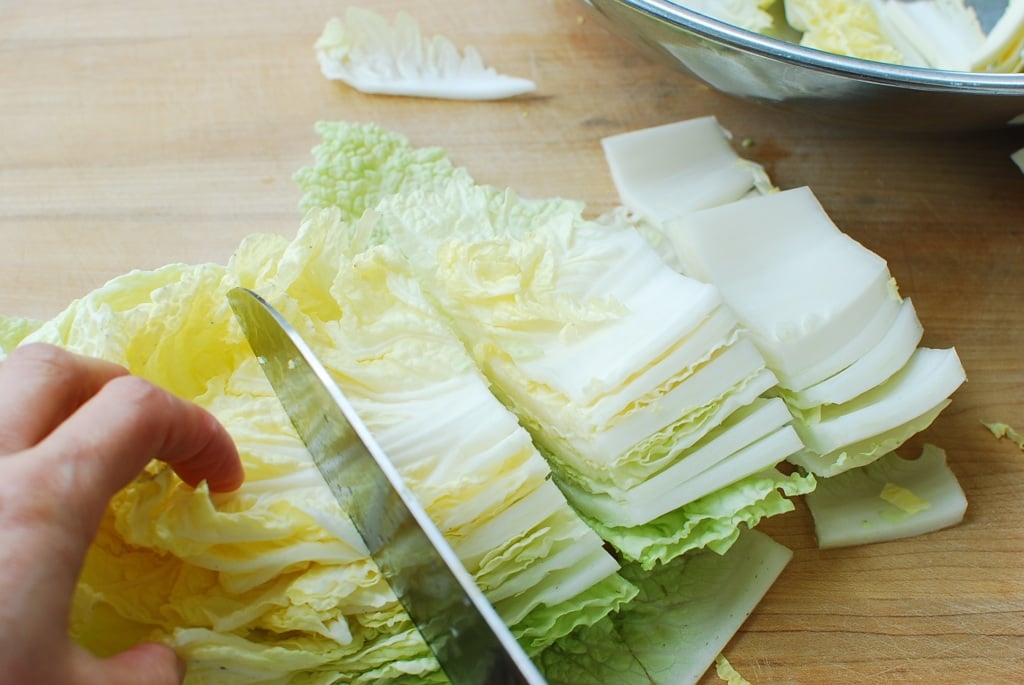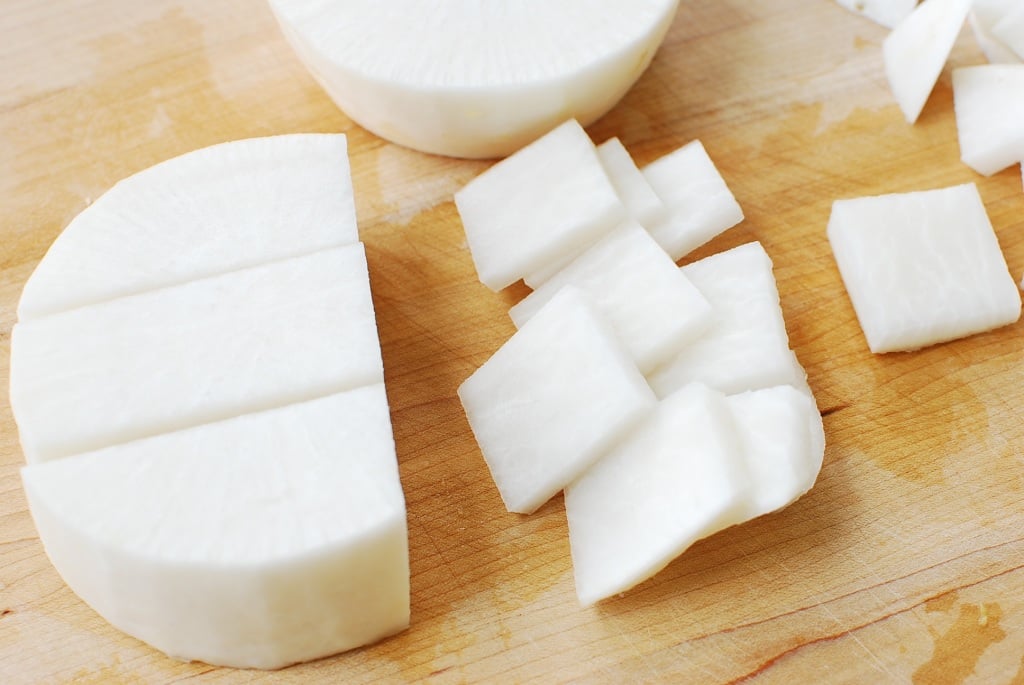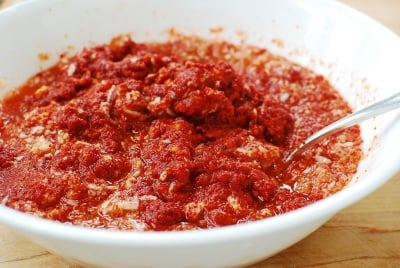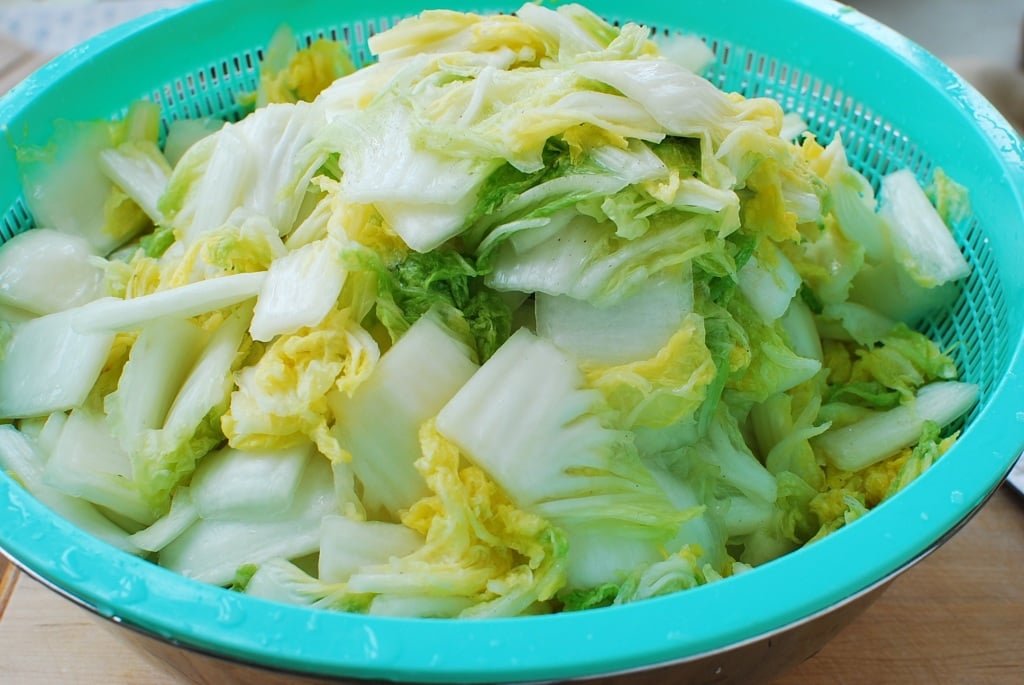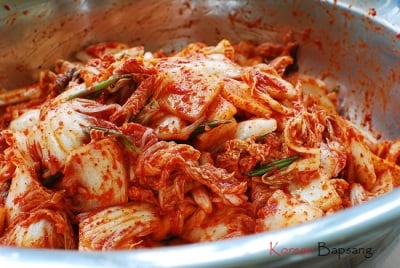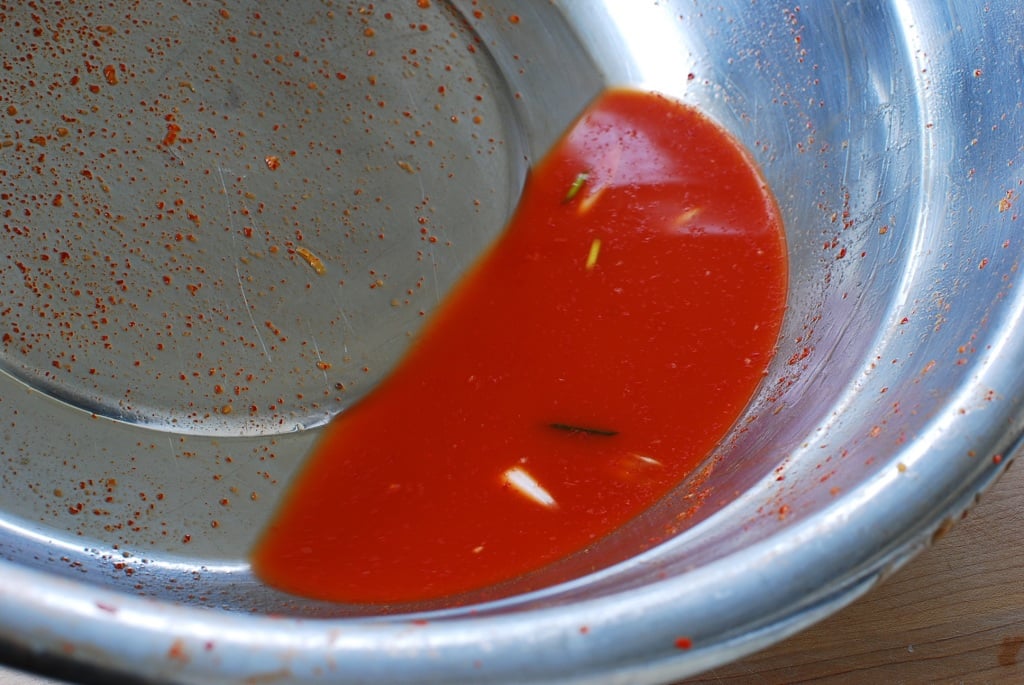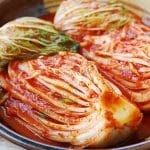Good, authentic homemade kimchi is much easier than you think. Cut up the cabbage, salt, rinse, and mix with the seasoning! That’s what this easy kimchi recipe is about.
The Korean word “mak” means “carelessly” or “roughly” (generally used as an adverb). The name mak kimchi (막김치) suggests this is carelessly (or roughly) made kimchi. Of course, we make all kimchi types with care, but the name comes from the shortcut method used to make this version as compared to traditional kimchi (aka pogi kimchi).
How to make easy kimchi at home
Pogi kimchi (포기 김치) is made by quartering the napa cabbage heads, salting for many hours, and carefully stuffing each leaf of the quartered cabbage. To serve, each cabbage quarter is cut into bite-sized pieces.
For this mak kimchi, you roughly chop the cabbage up into small pieces before salting and then toss it together with gochugaru (Korean red chili pepper flakes) and other seasoning ingredients. This method takes less salting and fermentation time.
There’s no argument that pogi kimchi has a deeper flavor and better texture because of how it’s prepared and fermented. For something simpler and quicker, Korean cooks turn to this mak kimchi, especially outside kimjang (annual kimchi making in fall) season. Trust me, it’s still very good!

Tips and Variations on this easy kimchi recipe:
- When I make this easy kimchi recipe, I almost always add some mu (Korean radish) just like my mother and mother-in-law used to. Not only does kimchi taste more refreshing with some radish, but it’s like having two different kimchi types in one dish.
- You can dress it up by adding other ingredients like Korean pear, apple, oysters, garlic chives, sweet rice paste, rice paste, etc.
- If you like lighter tasting kimchi, simply reduce the amounts of gochugaru (Korean red chili pepper flakes), salted shrimp, fish sauce, and/or garlic.
- If you don’t have saeujeot (salted shrimp), just add more fish sauce (and salt if needed) to achieve the desired salt level.
- Leave the kimchi out at room temperature for a day or two, depending on room temperature and how quickly you want your kimchi to ferment. Then, refrigerate. Kimchi should be fermented slowly at low temperature.
- Always press it down after removing some from the jar or container to remove air pockets. Less exposure to air is better for kimchi.
How long can I keep homemade kimchi in the fridge?
Your homemade kimchi will continue to age in your refrigerator, and this type of kimchi will be good for up to two months or even longer, depending on the salt level and how it’s kept.
Watch how to make it (1 napa cabbage):
More kimchi recipes
For more Korean cooking inspirations, follow along on YouTube, Pinterest, Twitter, Facebook, and Instagram.
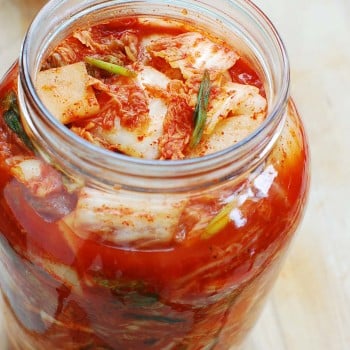
Ingredients
- 2 medium size napa cabbages (about 4 pounds each) about 8 pounds
- 1-1/4 cups coarse sea salt less if using finer salt
- 6 cups water
- 1 small Korean radish (mu) - about 1.5 pounds
- 1 tablespoon coarse sea salt
- 5 - 7 scallions roughly chopped
Seasoning
- 1 cup gochugaru Korean red chili pepper flakes
- ⅓ cup saeujeot salted shrimp, finely minced
- 4 tablespoons myulchiaekjeot fish sauce
- 1/4 cup minced garlic
- 2 teaspoons finely grated ginger
- 1 tablespoon sugar - optional
Utensils:
- large bowls preferably at least 7 - 8 quarts
- large colanders
- kitchen gloves
- airtight containers or jar(s) - about 1.5 gallons total
Instructions
- Cut the cabbage heads into quarters and remove the core from each quarter. Cut each quarter crosswise into bite sizes (about 1.5-inches).
- Place the cabbage pieces in a large bowl(s). In a smaller bowl, dissolve 1-1/4 cups of salt in 6 cups of water. Pour over the cabbage. Toss well to wet the cabbage pieces evenly with the salt water. Let stand until the white parts are bendable, about 2 hours, turning the cabbage pieces over occasionally.
- Cut the radish into bite sizes (about 1.5-inch square, about 1/4-inch thick). Sprinkle with a tablespoon of salt. Toss well. Let it sit for about 30 minutes. Drain. Do not wash.
- Rinse the bowl with 1/2 cup of water by swirling around, and pour over the kimchi. Press it down to remove air pockets.
- Leave the kimchi out at room temperature for a day to two depending on how quickly you want your kimchi to ferment. Then, refrigerate.
Notes
You can dress this kimchi up by adding other ingredients like Korean pear, apple, oysters, garlic chives, Korean sweet rice or regular rice paste, etc.
If you like lighter tasting kimchi, simply reduce the amounts of red chili pepper flakes, salted shrimp, fish sauce, and/or garlic. If you don't have salted shrimp, just add more fish sauce (and salt if needed) to achieve the desired salt level.
You can eat this kimchi any time, but it will taste better after fermenting a week or two in the fridge.
Tried this recipe?Mention @koreanbapsang or tag #koreanbapsang!




